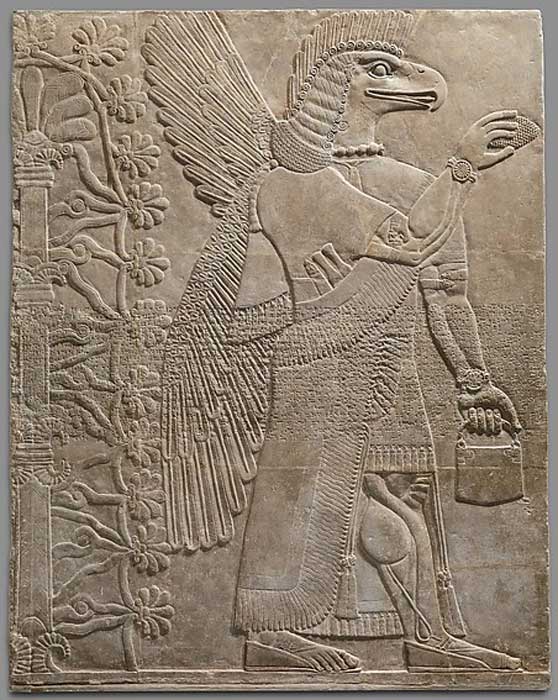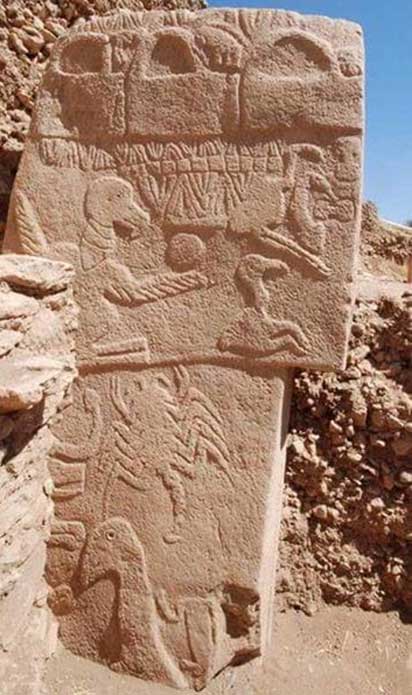The image of a handbag is a mysterious symbol found in ancient carvings across the world, including in depictions by the Sumerians of Iraq, ruins of ancient Turkish temples, Maori decorations in New Zealand, and crafts by the Olmecs of Central America. Throughout history and different cultures, handbags have been depicted in art, with the earliest known instance dating back to the end of the Ice Age. What could this enigmatic symbol represent and why is it so prevalent in ancient art?
 |
| Reddit.com |
Could this symbol be a representation of the cosmos?
The handbag symbol earned its name due to its striking resemblance to a modern-day purse. Typically, the symbol consists of a rounded handle-like top and a rectangular bottom, and may include various texture or pattern details. These symbols are sometimes depicted alone, while other times they are held in the hand of a person, god, or mythical being, resembling the way one would hold a basket.
One theory regarding the prevalence of this symbol is that it represents the cosmos in a simple and direct manner. The semi-circle strap of the image is believed to symbolize the hemisphere of the sky, while the solid square base represents the earth. Throughout ancient cultures, circles were commonly associated with spiritual or non-material concepts, whereas squares were often associated with materiality and the Earth. Therefore, the image of a handbag may symbolize the reunification of the material and non-material aspects of existence, merging the earth and sky into one.
 |
| Assyrian relief carving from Nimrud, 883–859 B.C. ( Metropolitan Museum of Art ) |
Earliest known representations of the 'Handbag'
One of the earliest known instances of the handbag symbol can be found in the ruins of Göbekli Tepe, a temple complex located atop a mountain ridge in southeastern Turkey. Dating back to around 11,000 BC, Göbekli Tepe is one of the oldest ever-discovered temple sites. While the exact purpose of the mountain sanctuary remains unknown, archaeologists have uncovered many butchered animal bones suggesting it may have served as a site for religious sacrifices. The walls and pillars of the temple are adorned with finely carved animals, gods, and mythical creatures, perhaps intended to depict the many different creations of the cosmos. Among these carvings, three handbags can be found.
According to experts, early religions focused on worshiping the essential elements of life on Earth. Therefore, "the three Göbekli Tepe handbags, taken as an early form of those icons, could be said to symbolically define the site as a temple" (Scranton, 2016).
 |
| Pillar 43 from Gobekli Tepe in Turkey shows three ‘handbag’ carvings along the top. Credit: Alistair Coombs |
The peculiar carving can be discovered from the Middle East to South America.
The handbag image appears in two stone reliefs, one created by the Assyrians of ancient Iraq between 880-859 BC, and the other by the Olmecs of ancient Mesoamerica between 1200-400 BC. In both carvings, a figure holds the handbag as if it were a basket or purse. According to Freeborn (2013), in Assyrian art, the handbag holds magic dust, while in Olmec art, it is believed to contain herbs for achieving a high. This leads to the idea that the handbag may have been a standard of measurement discovered independently by both cultures.
 |
| Olmec Monument 19, from La Venta, Tabasco, shows a man holding the handbag in his hand. ( Xuan Che ) |
An image resembling a handbag can also be found in New Zealand, as a hero in a Maori myth ascended to the home of the gods and returned to earth carrying three baskets full of wisdom. The handbags in this myth represent gratitude and worship for knowledge bestowed upon them by the gods, similar to the Göbekli Tepe handbags.
Additionally, the handbag-like image can be seen in ancient Egyptian hieroglyphs, serving as a home for the gods and goddesses. The purse straps represent the domed poles of the portable tent, and the square bottom represents the cloth or animal skins laid across the poles, much like a Native American teepee or a central Asian yurt.
The abundance of instances of this symbol suggests that the handbag was used as a cosmological symbol represented by a common household item, such as a basket, in order to be easily understood by the general public.
Image Sources:
Freeborn, B. L. "The Odd Little Purse in Olmec and Assyrian Art." Noahsage. Noah's Age, 1 July 2013. Web. https://noahsage.com/2013/07/01/the-odd-little-purse-in-olmec-and-assyrian-art/.
Scranton, Laird. "Perspectives on Ancient Handbag Images." Lost Origins . Lost Origins, 21 Feb. 2016. Web. http://lost-origins.com/perspectives-on-ancient-handbag-images/.
Tinfoil Hat. "Ancient Purses and Balls of Power." Tinfoil Hat Lady . Tinfoil Hat Lady, 10 June 2014. Web. https://tinfoilhatlady.com/2014/06/10/ancient-purses-and-balls-of-power/.




